
Spain, Costa Blanca with the Mamiya 7
By Dirk Dom
Hi!
Spent a week in Moraira, Costa Blanca, Spain with my folks and my sister and her husband.
I took the Linhof technical camera and the Mamiya 7 with the 65mm and 150mm lens. These lenses were newly bought and I hadn’t used them yet.
The 150mm has a bad rap, because it is supposed to be difficult to focus with the rangefinder. So far, I only had the 43mm superwide for that camera, which I always zone focused. This was in fact the first time I was really obliged to use the rangefinder.
It turned out that all my exposures were focused spot on. I think the bad reputation of the 150 is because many people buy this lens for street photography (it’s equivalent to a 77mm on full frame (35mm film) and focusing with the rangefinder on moving subjects may be difficult. You need something with good contrast.
Because I was enjoying this vacation with other people, I didn’t use the Linhof. I shot the 150mm all the time, except for one shot with the 65. All in all I shot eight films, 80 images.
Well, enough said.
For the tech people:
Mamiya 7, 6×7 format.
150mm f/4.5
65mm f/4.5
Kodak Tmax 400 exposed for 800, developed in Tmax developer at 24°C for six minutes
Orange filter
Scanned with Epson V750 at 2,400PPI, photoshopped (levels, burning and dodging)
Prints on Hahnemühle Baryta.
Here we go:
Here I had this diaphragm spot. I decided to make it more obvious and use it in the composition. I think it came out nice, but of course it’s not something I do every day.
–
Underwater rocks are always beautiful. Black and white isn’t an obvious choice for this, because the brown rock and the beautiful blue water. I think this simple image came out nice.
–
On the way to Denia this landscape with three clouds.
–
This is the Ifach, the epic rock at Calpe which was a navigation landmark for the Phoenicians.
–
When I saw this image, I only had a second. I grabbed the camera and fired. This shot for some reason was extremely difficult to post process, because the coastline in the back was a perfectly even grey. It took four tries to make it into something sensible, and even now I’m not fully satisfied. But I can’t make it any better.
–
This tower I’ve been shooting for years. The sky happened to be beautiful this time.
–
I just love cloudscapes. A few weeks ago, I thought: “Why don’t I take photographs of just clouds, without landscape underneath?
These are my first images.
–
Only shot taken with the 65mm on this trip.
–
These cloud shots are a riot. I use the shot as a template and then I burn and dodge to taste. It may sound a little weird, but I take a great deal of time doing minute detail, going back and forth from a big image to a small one. I only stop when it looks perfect and balanced to me. I guess this is the ultimate “Negative is the Score, Print is the Performance” (the famous Ansel Adams quote) experience.
Well, ten shots out of eighty. Not bad.
The Mamiya 7 is an ultimate fun camera. It handles extremely easy, and the negatives… Well, let’s just say half a year ago I really, really wanted a Sony A7S, well that want has just gone away, I’m on a different road. I’ve never had such a positive photographic experience as with medium format black and white. I must say the rangefinder experience is extremely positive.
Hope you’ve enjoyed the show, thanks for looking.
Oh, yes, got a website now: www.kridmod.zenfolio.com
Bye,
Dirk.

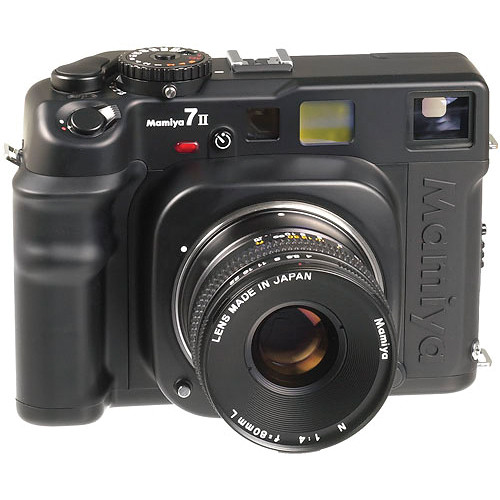
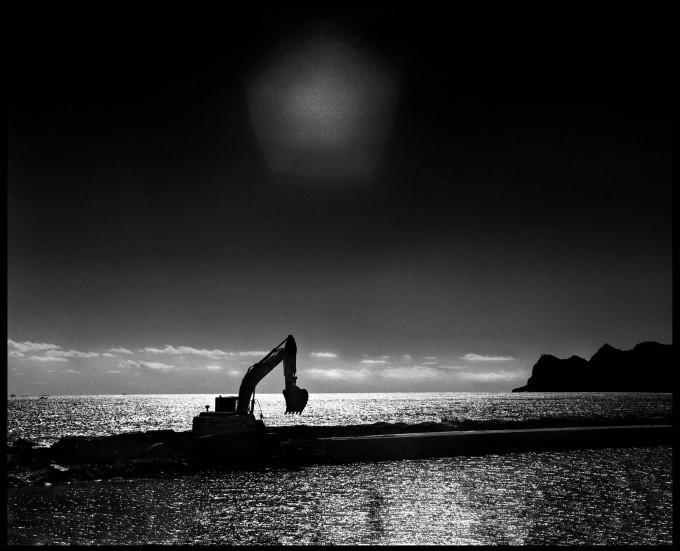
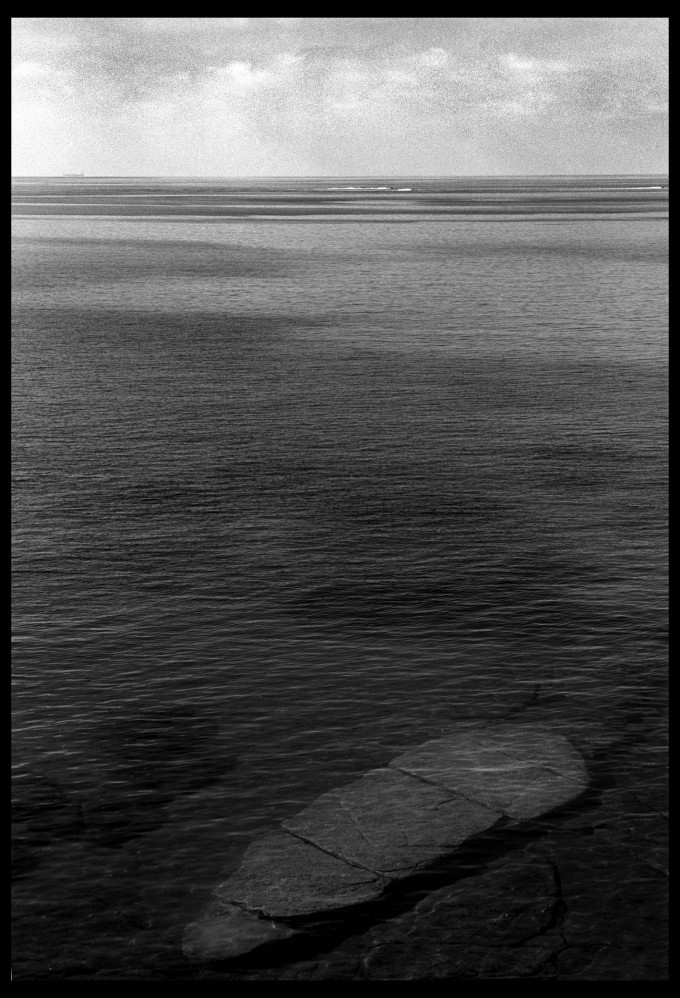
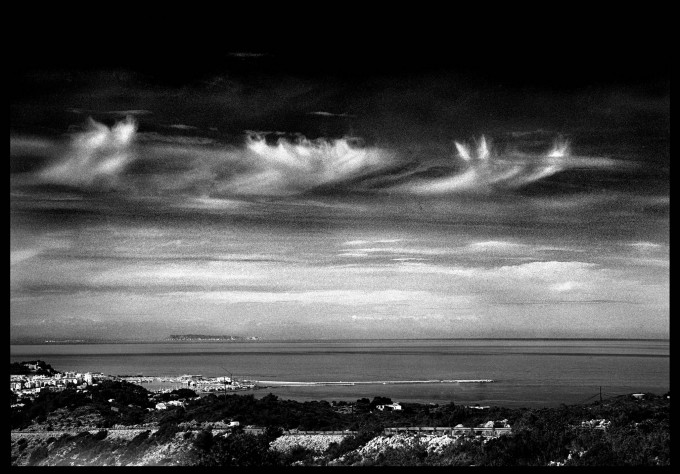
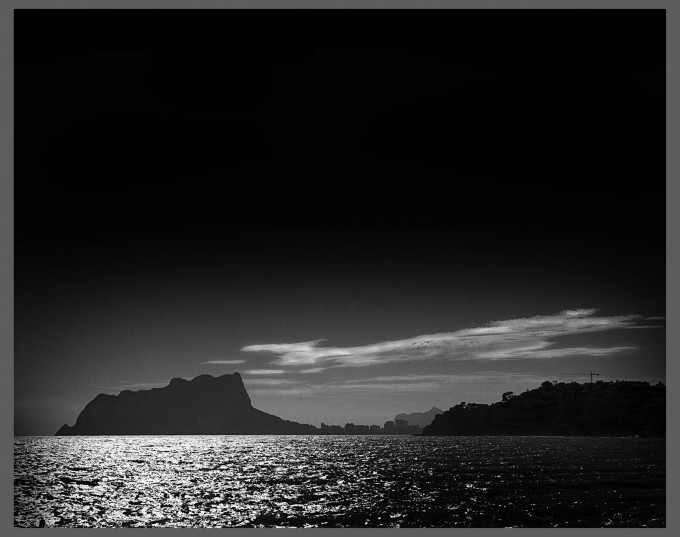
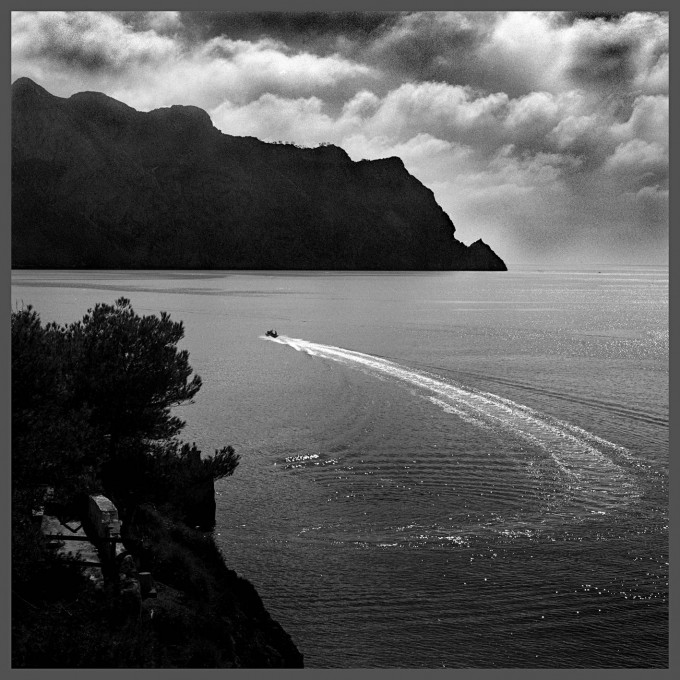
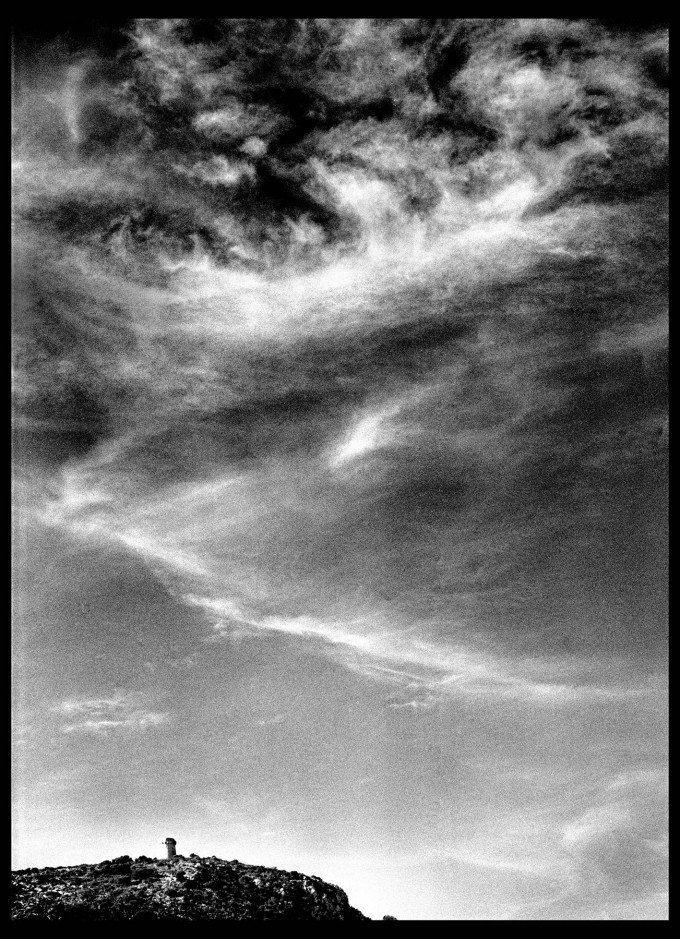
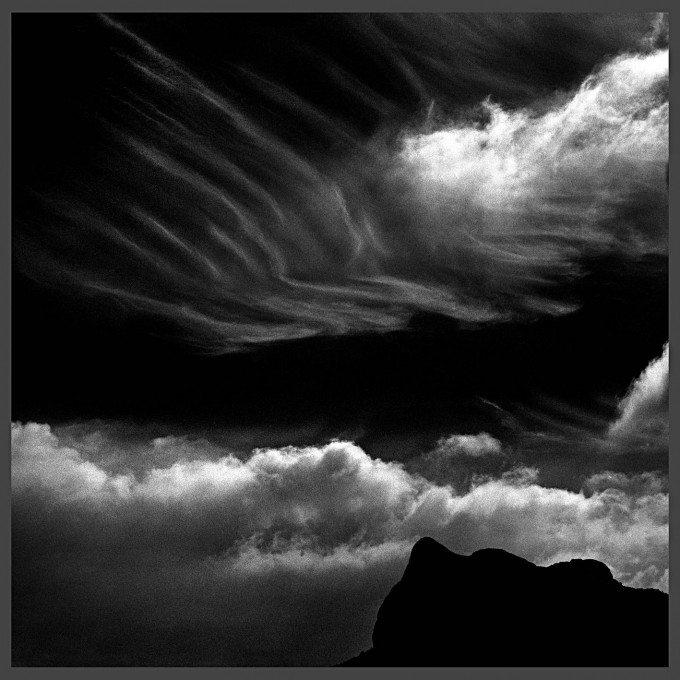
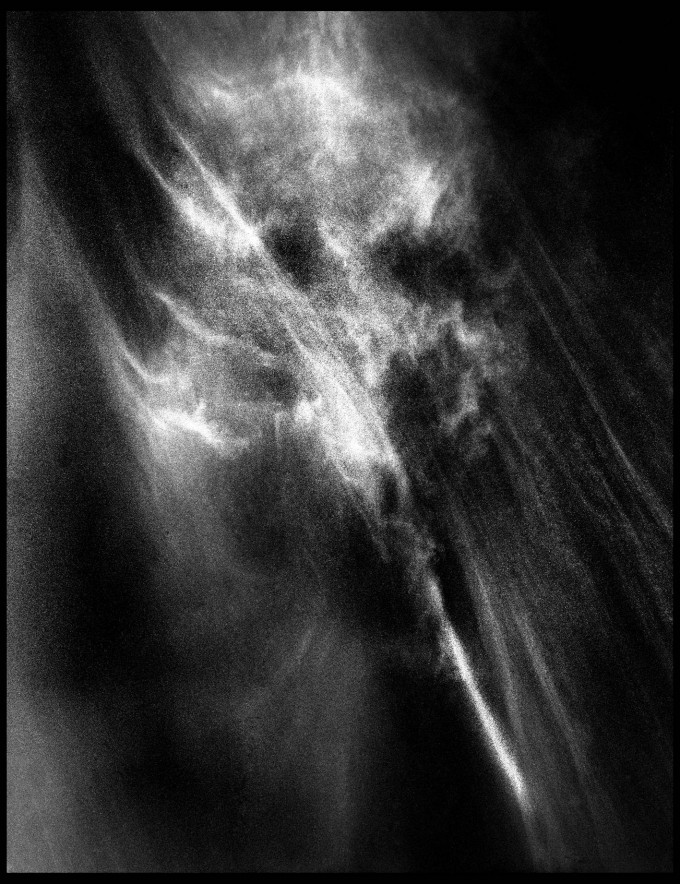
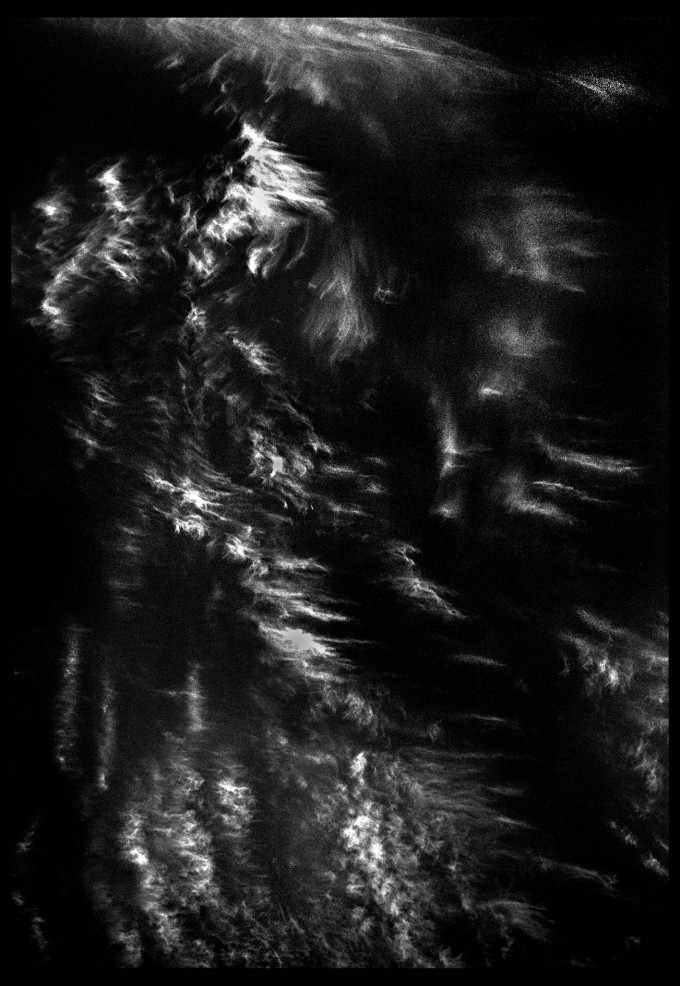
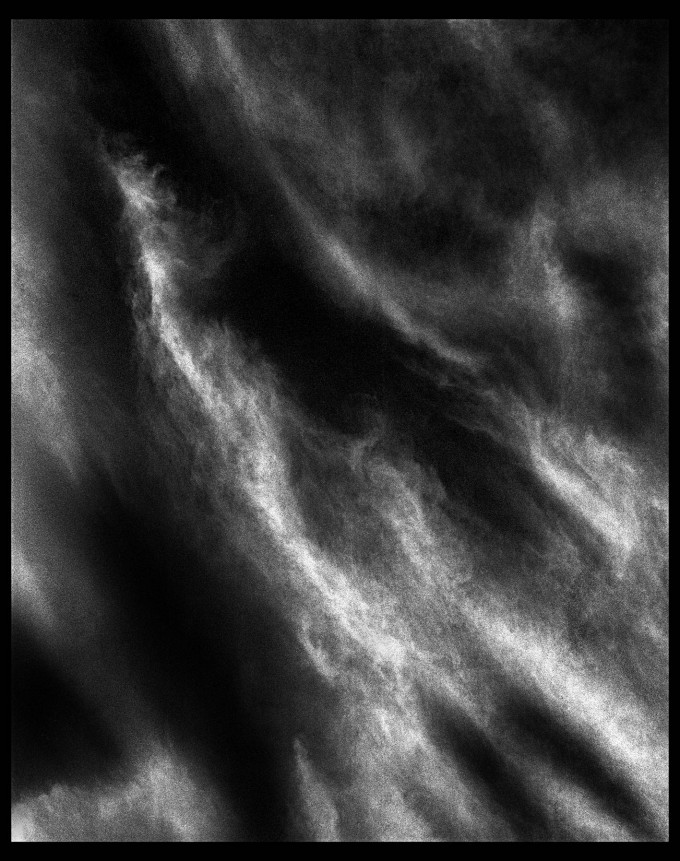


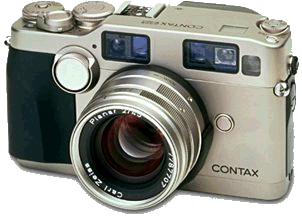
well, Ivan,
i have no idea why grain can get so coarse.
I do expose for 800 ASA, but that’s only one stop of pushing. The heavy grain happens in areas I heavily burn. It may be the very heavy downsizing for Net display exaggerates the grain.
I sharpen just the tiniest bit because otherwise the grain looks unnatural. Once i had a scan done on an Imacon by a pro lab and they way oversharpened it and the grain looked like very aggressive black points.
It also may be I’ve got grain aliasing, but I don’t think so, I only scan at 2,400PPI, and I had images drumscanned at 5,000PPI, with absolutely no grain aliasing and I got the same grain.
One of my main reasons for shooting black and white film is grain, so I’m happy with it.
there is great detail in even my 2,400PPI scans, in one shot I see a very tiny cargo boat at the horizon, and it shows remarkable detail. That’s the power of medium format.
When I shoot Tmax 100, there is no grain at all visible. But then I might just as well shoot digital.
Ektar 100 I got scanned at 8,000PPI, and also in fact no grain. the sharpness of that last shot was limited by the tiniest amount of motion blur which got noticeable when I blew up the image to two meters. BTW a 35mm image scanned at 8,000PPI yields a 100 megapixel file. That’s a 500MB TIF.
Bye,
Dirk.
Wow, Dirk! Pretty amazing. I prefer the more abstract ones, so as I was scrolling downwards, that was really rewarding. I’m not sure about the first picture. Googling for ‘diaphragm spot’ results in rather obsure medical websites… 😉
I love grain too, but I find the grain in some of the pictures very prominent, esp. for a medium format negative, so I wonder if this is due to A) the film B) the development process or C) photoshop. Please enlighten me!
Cloud pictures are beautiful and really benefit from being b&w. Thank you for sharing.
Nice pics.
I use to stay on holiday in the same area, Callosa d’En Sarria.
Fantastic stuff, Dirk!
Medium format film is simply beautiful and is now within everybody’s reach. Wonderful cloud scapes 4th images is superb !
Excellent work as always Dirk.
Fine images. Though more black than white. Maybe it should be called Costa Negra …
interesting work..
Fantastic images. Inspiring even. I also shoot medium format analog film and can say it is simply a wonderful road to be on, as you put it. Keep going.
Nice work Dirk!
Dirk, I enjoyed your process with medium format B&W. Interesting images and definitely unique. Keep up the good work and thank you for sharing.